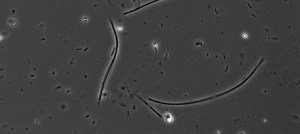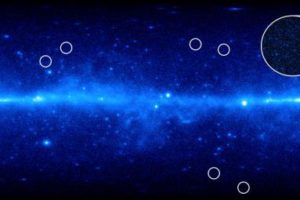dark matter
Distant Ring of Stars Found Around the Milky Way
A previously unseen band of stars beyond the edge of the Milky Way galaxy has been discovered by a team of scientists from Rensselaer Polytechnic Institute, Fermi National Accelerator Laboratory, and the Sloan Digital Sky Survey (SDSS). The discovery could help to explain how the galaxy was assembled 10 billion years ago.
S. Pole Telescope Produces Most Detailed Images of the Early Universe
Using a powerful new instrument at the South Pole, a team of cosmologists has produced the most detailed images of the early Universe ever recorded. The research team, which was funded by the National Science Foundation (NSF), has made public their measurements of subtle temperature differences in the Cosmic Microwave Background (CMB) radiation. The CMB is the remnant radiation that escaped from the rapidly cooling Universe about 400,000 years after the Big Bang. Images of the CMB provide researchers with a snapshot of the Universe in its infancy, and can be used to place strong constraints on its constituents and structure. The new results provide additional evidence to support the currently favored model of the Universe in which 30 percent of all energy is a strange form of dark matter that doesn’t interact with light and 65 percent is in an even stranger form of dark energy that appears to be causing the expansion of the Universe to accelerate. Only the remaining five percent of the energy in the Universe takes the form of familiar matter like that which makes up planets and stars.


